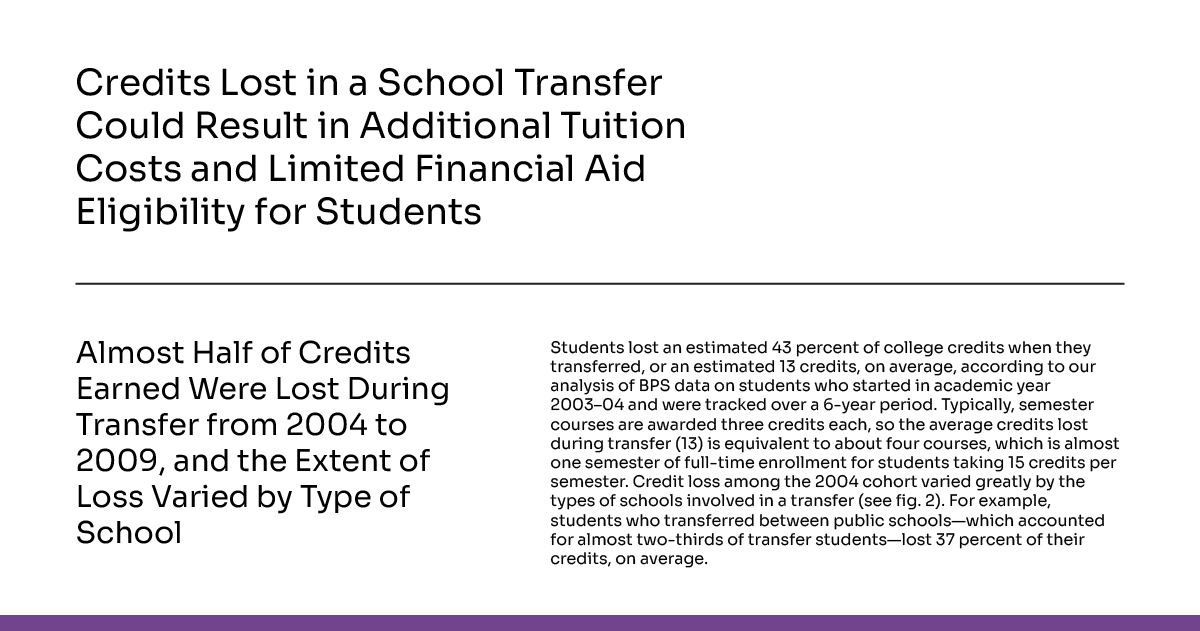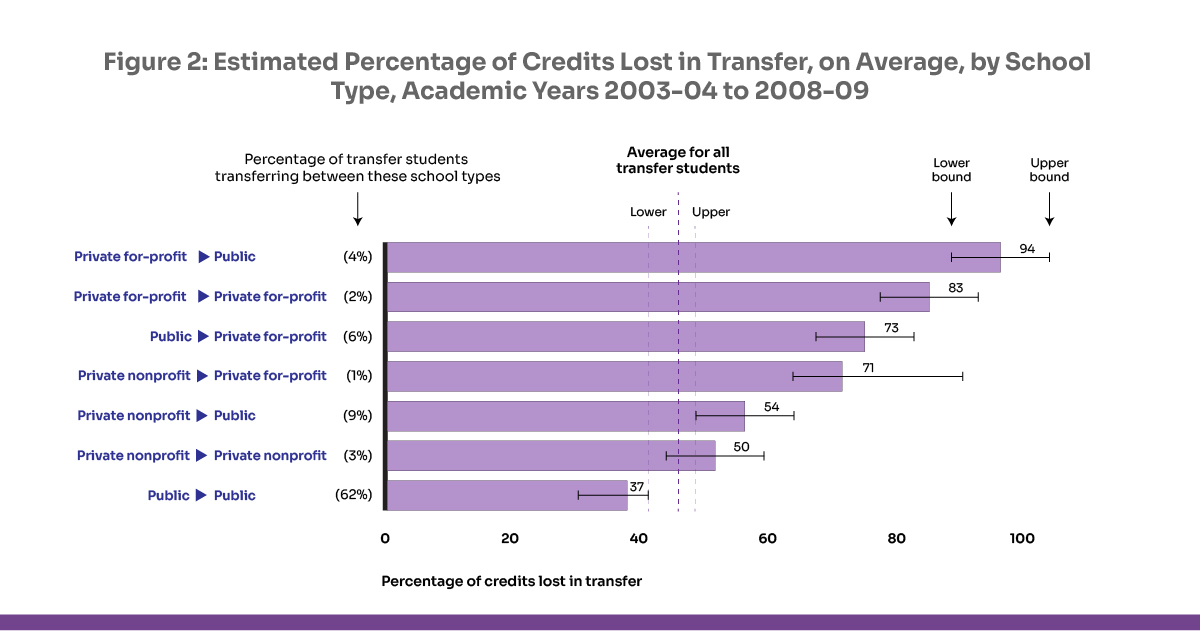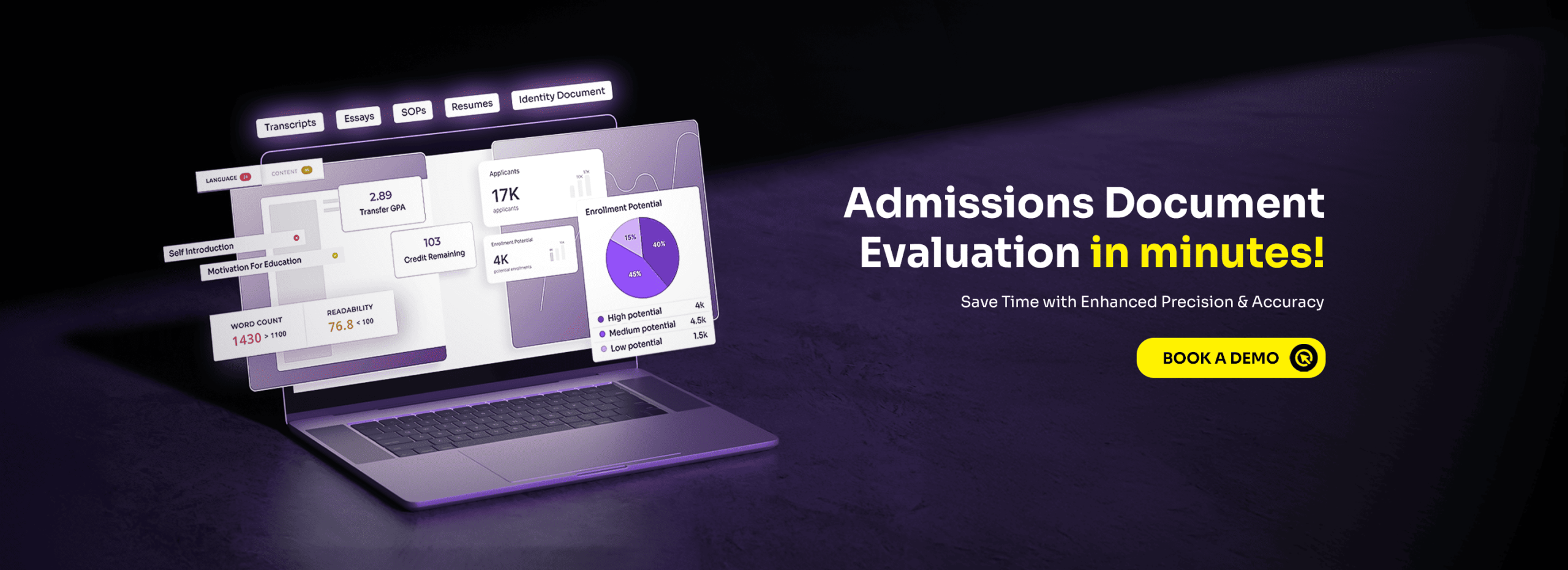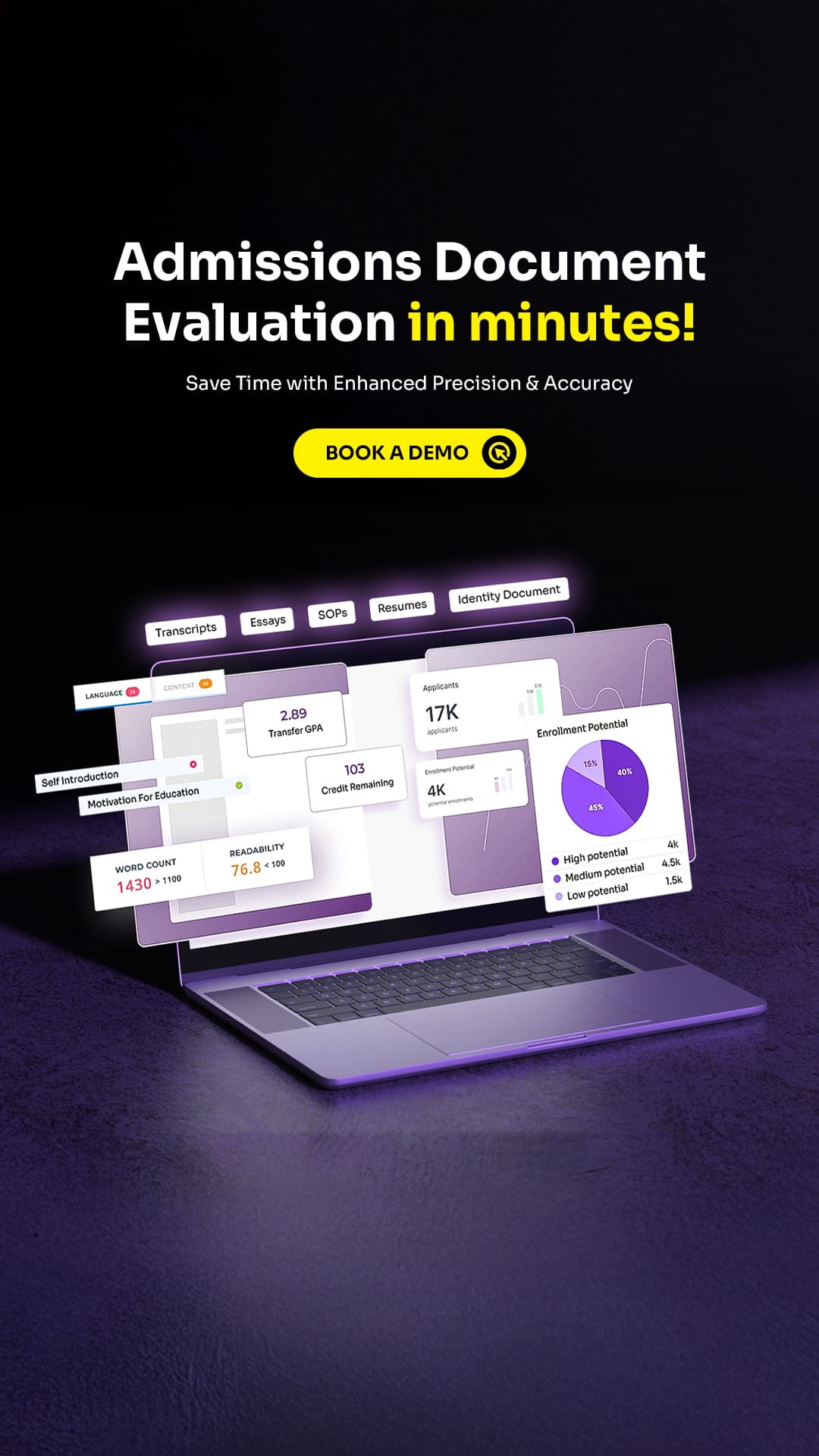The student transfer process can be difficult, especially when it comes to credit evaluations. By using AI tools, universities can streamline this process, improve student outcomes, and enhance the overall experience.
Table Of Contents
The transfer process can be daunting for students, especially when it comes to transferring credits. Many students, especially those from community colleges, want to earn a bachelor’s degree but face many problems along the way. For universities, managing transfer admissions efficiently while ensuring a smooth transition for students is equally important.
43% of transfer students lose their credits when transferring to a different college or university (U.S. Government Accountability Office), often losing about 13 credits or a semester’s worth of coursework.
Key Finding:


Around 40% of postsecondary students will transfer at some point in their academic journey, highlighting the importance of improving the transfer process.
With the help of AI, universities can now simplify the transfer admissions process. AI can automate tasks, predict student success, and offer support, making the admission process easier and less stressful for both students and colleges.
How AI is Transforming the Transfer Process
AI is transforming the student transfer process by making it faster and more efficient, for both universities and students. With AI, universities can streamline credit transfers, provide better student support, and make decisions to improve student success.
Streamlining Credit Transfer Evaluation
AI can simplify and speed up the process of evaluating transfer credits, offering students quick and accurate assessments of how their credits will apply to programs. This transparency makes colleges more attractive to transfer students. For example, Metropolitan State University of Denver improved its credit transfer process by using a semi-custom AI tool, reducing the evaluation timeline from weeks to just one week. This not only reduced administrative delays but also reduced student frustration, improving the overall transfer experience. With EDMO’s Document Intelligence, universities can speed up this process, completing transfer credit evaluations in under 4 hours while improving efficiency and student satisfaction.
Predictive Analytics for Student Success
AI can predict how well transfer students will do at their new university by looking at past data like their GPA and overall performance. This helps schools provide extra support, like tutoring or advising, for students who may need it. For example, one university used AI to target students who were likely to respond to personalized calls, which led to a 15% increase in enrollment. However, only 40% of schools use predictive AI in admissions, showing that there’s still a lot of potential to improve transfer student success.
Automating Administrative Processes
AI can automate routine tasks in transfer admissions, such as processing applications and managing documentation, allowing staff to focus on other important tasks. A survey revealed that 80% of colleges planned to use AI in admissions, with 70% of admissions officers already using AI to evaluate recommendation letters and transcripts, and 60% using it for personal essay evaluations. This automation improves the efficiency of the transfer process, reducing workload and improving overall admissions effectiveness.
AI Chatbots for Real-Time Support
AI-powered chatbots provide transfer students with real-time support, answering questions related to admissions, financial aid, and campus resources. Thompson Rivers University uses an AI chatbot to handle 83% of application-related inquiries, reducing stress and improving student satisfaction. These tools improve the transfer experience by providing quick, reliable answers, making it easier for students to adjust to new academic environments. With EDMO’s Conversation Intelligence, universities can increase engagement and guide students through admissions, leading to 20% higher enrollment conversions.
Data-Driven Decision Making
AI helps higher education institutions make better decisions in transfer admissions by evaluating data to predict student success. It looks at both academic qualifications and how well students fit with the program and campus culture. A survey found that 50% of admissions offices are already using AI to improve their review processes, leading to more informed and efficient decision-making.
AI is playing an important role in improving the student transfer process, making it smoother and more efficient. As more universities use these AI tools, transfer students will benefit from faster evaluations and personalized support.
Conclusion
AI is changing the student transfer process, making it easier and more effective for everyone. It helps universities speed up admissions, make better decisions, and provide personalized support to transfer students. As more institutions adopt these AI tools, the transfer experience will continue to improve for students. With EDMO’s AI solutions, universities can simplify credit evaluations, improve student engagement, and increase enrollment rates.
Also Read: Higher Education Trends in 2025
Western New England University Teams Up with EDMO to Boost Student Engagement and Admissions
7 Proven Ways to Personalize the Admissions Process Using AI
What does success mean to students in a digitized world, and how to help them achieve it?









No comments yet. Be the first to comment!
Leave a Comment